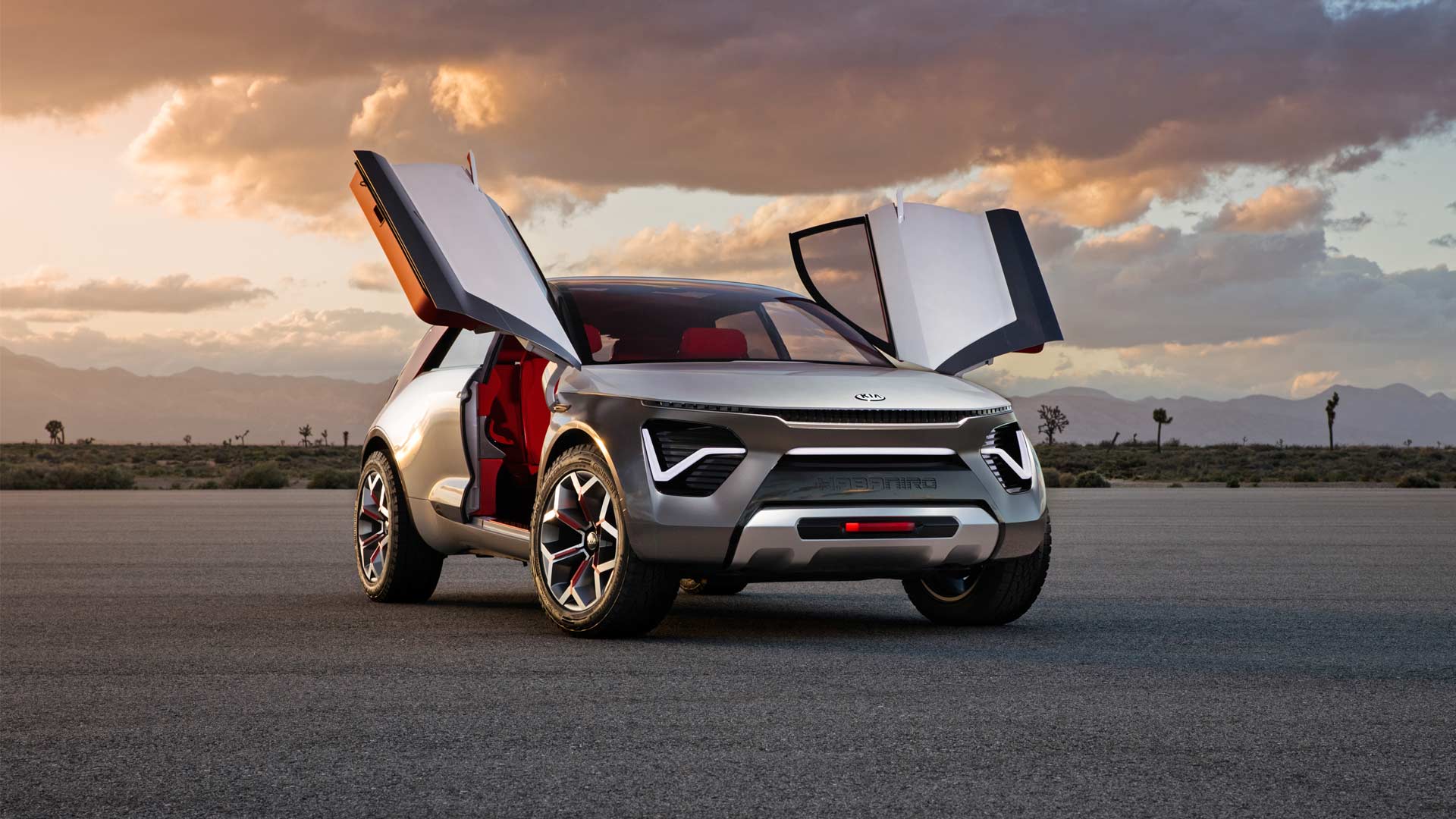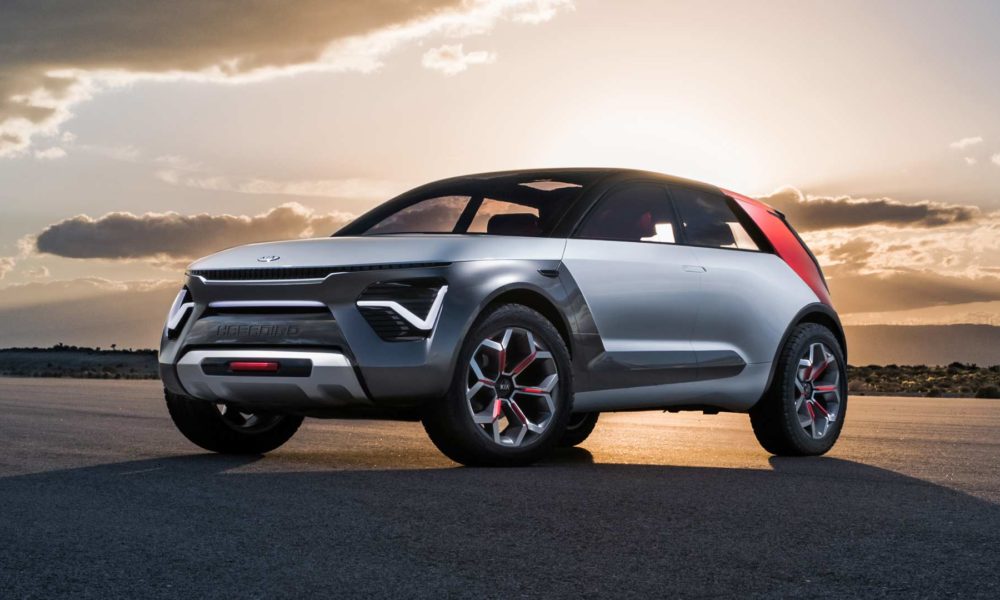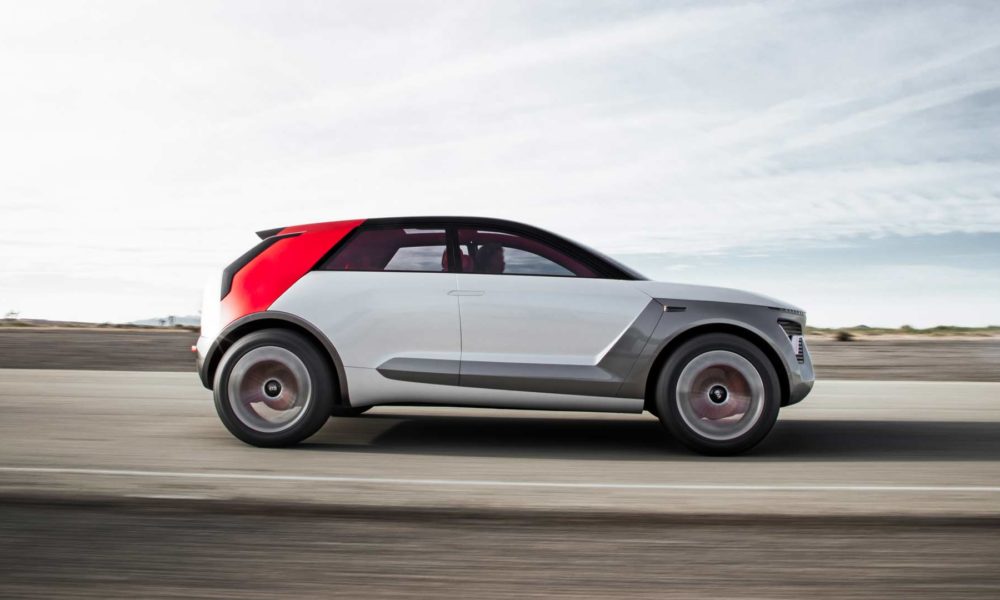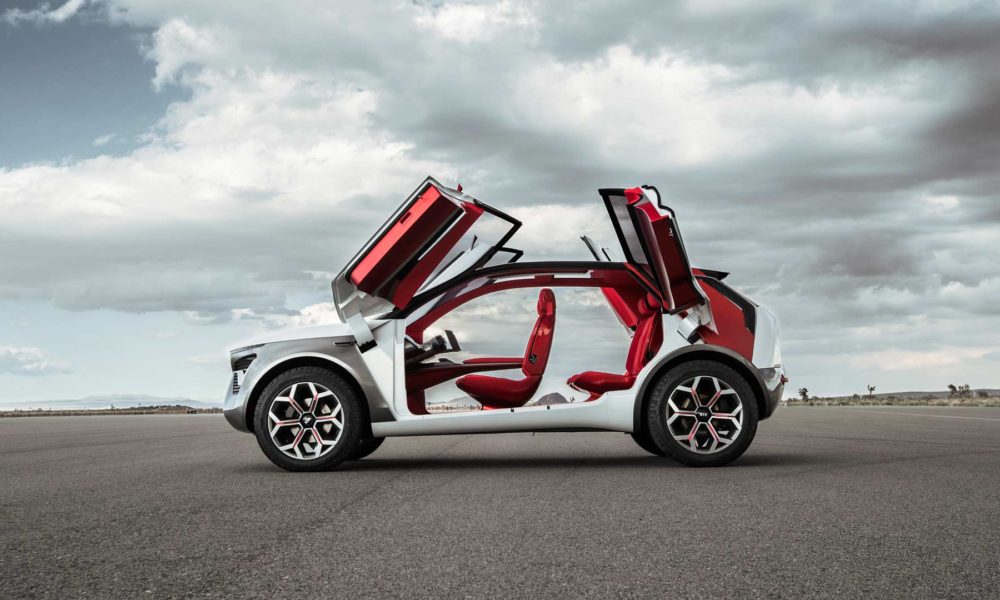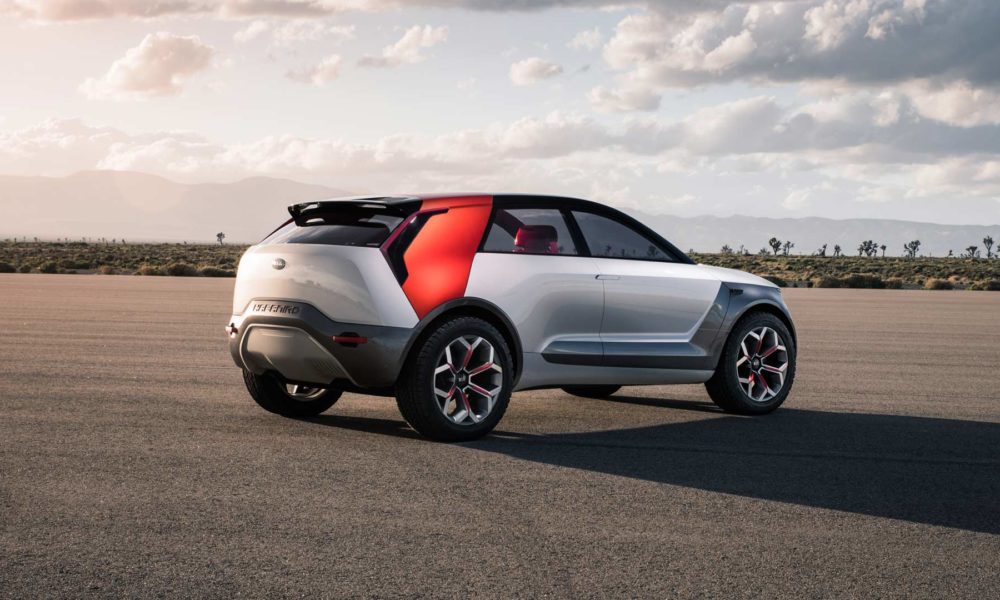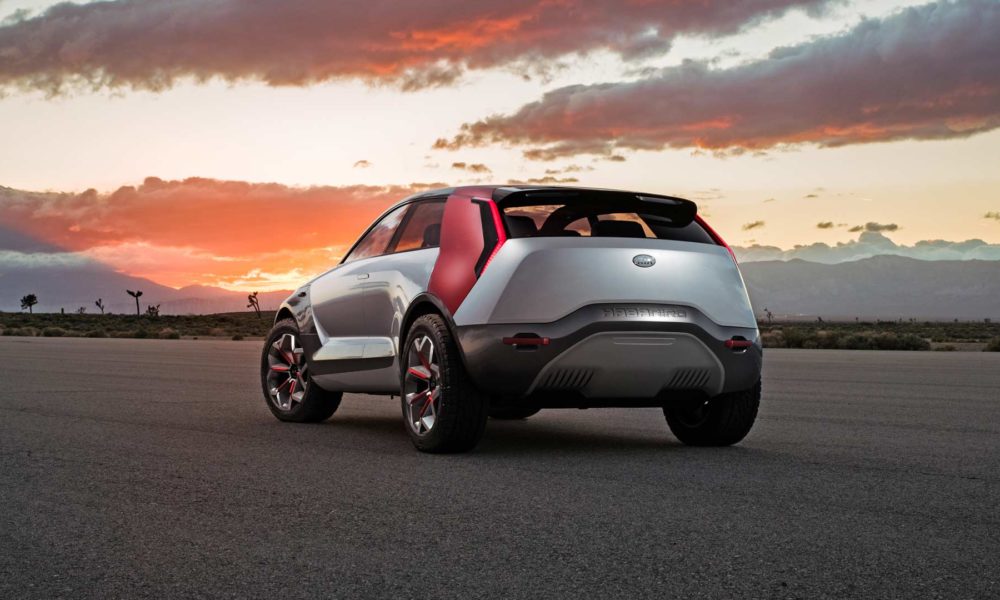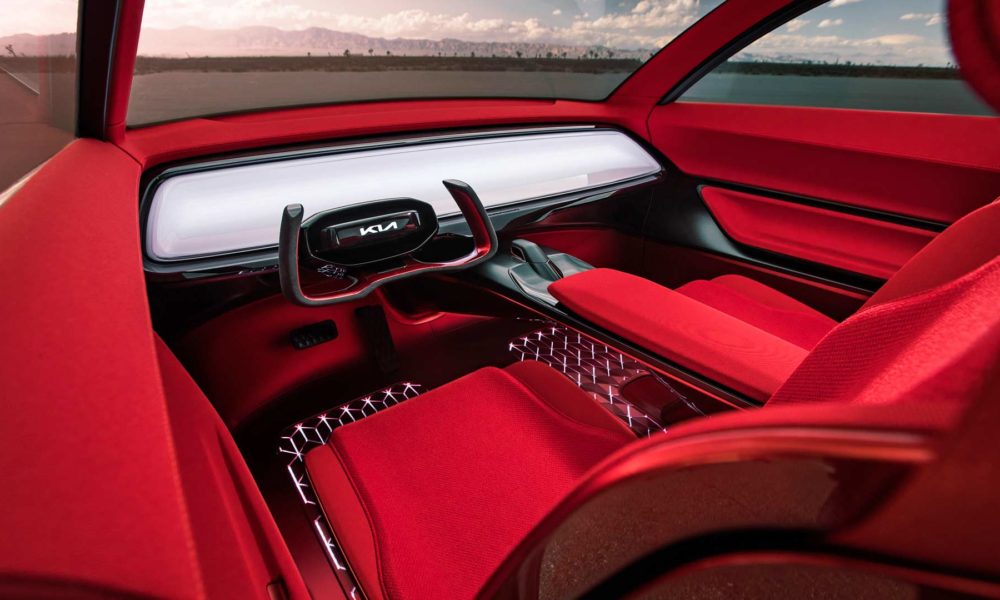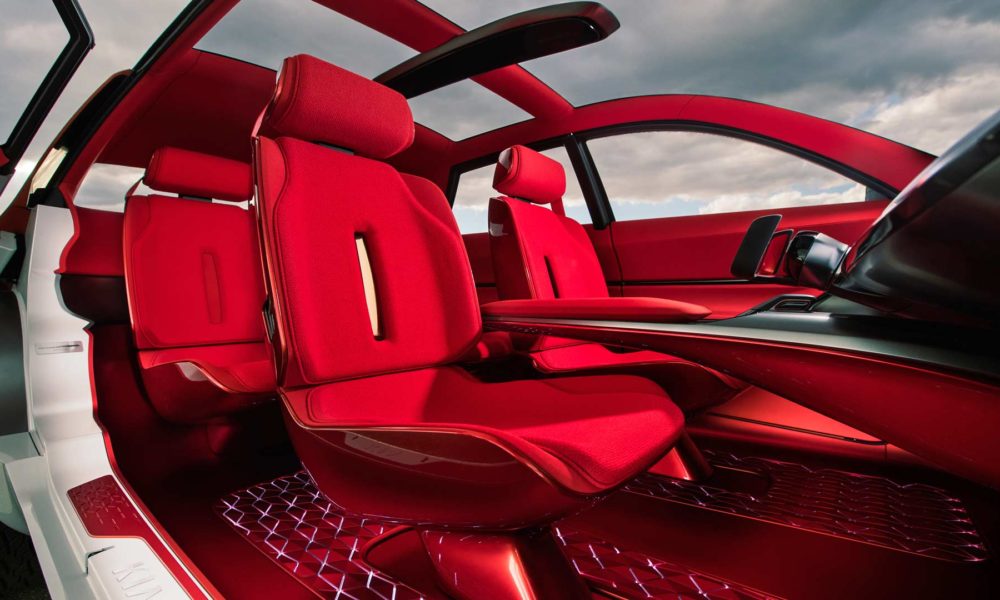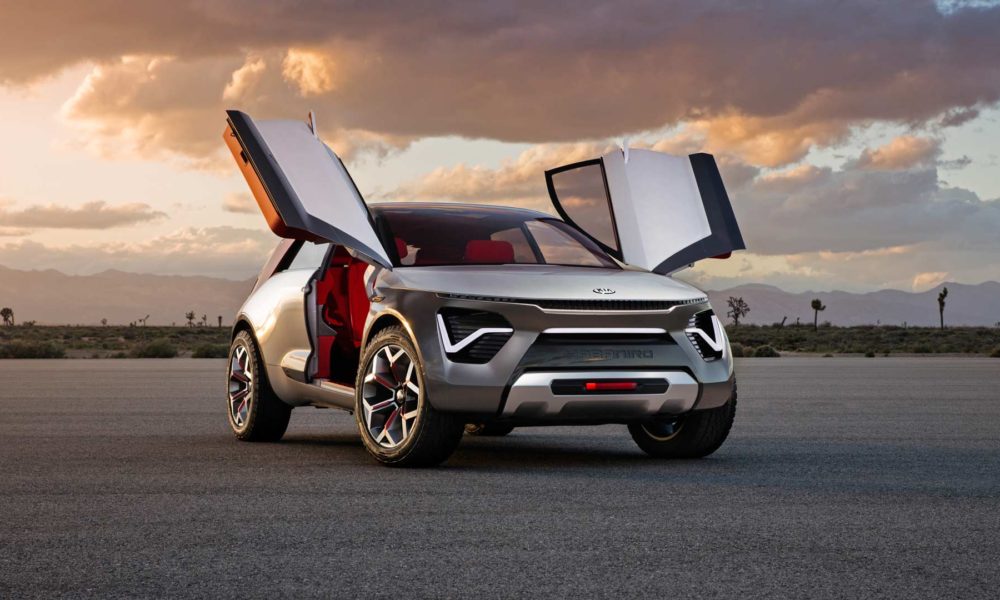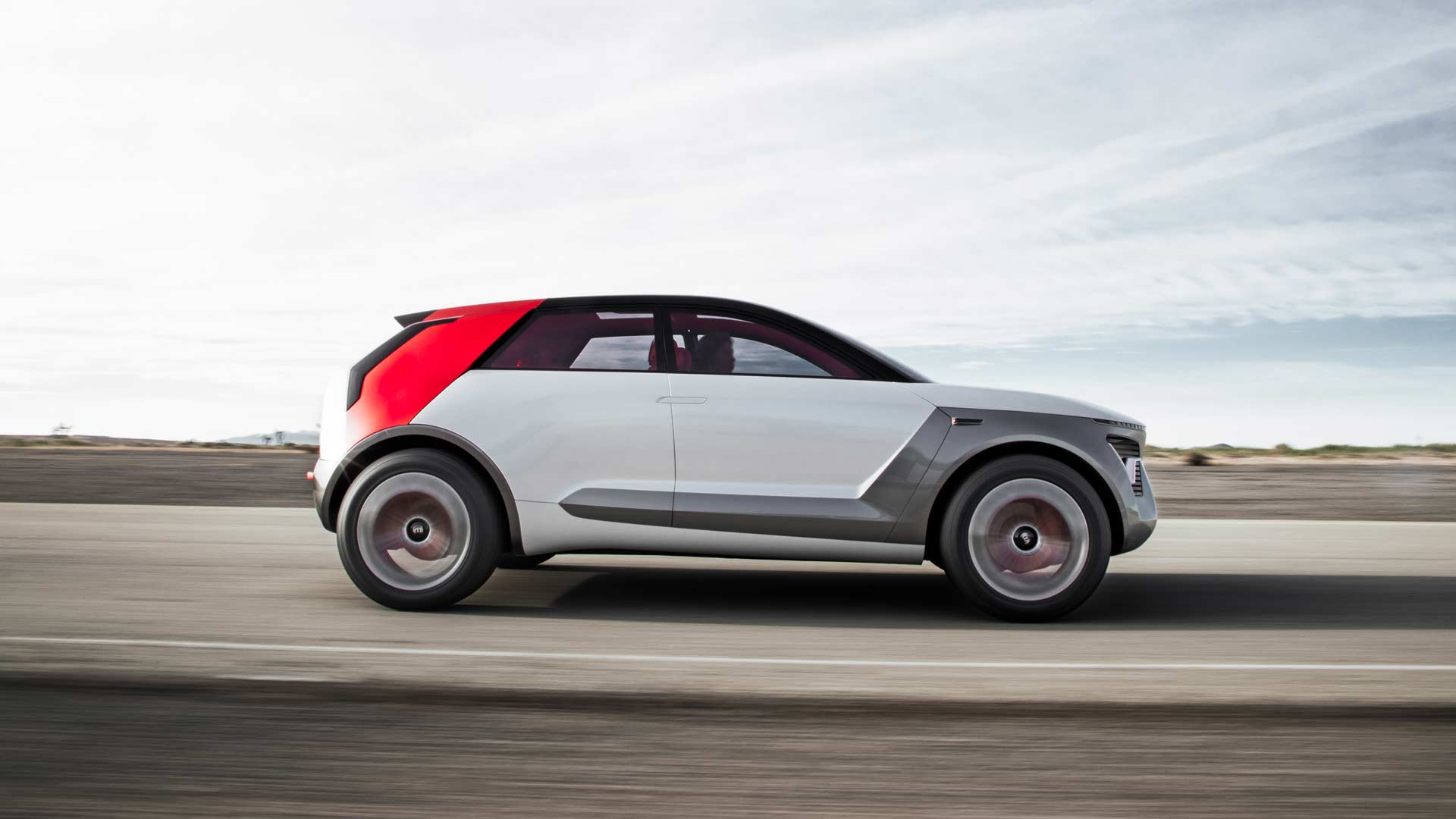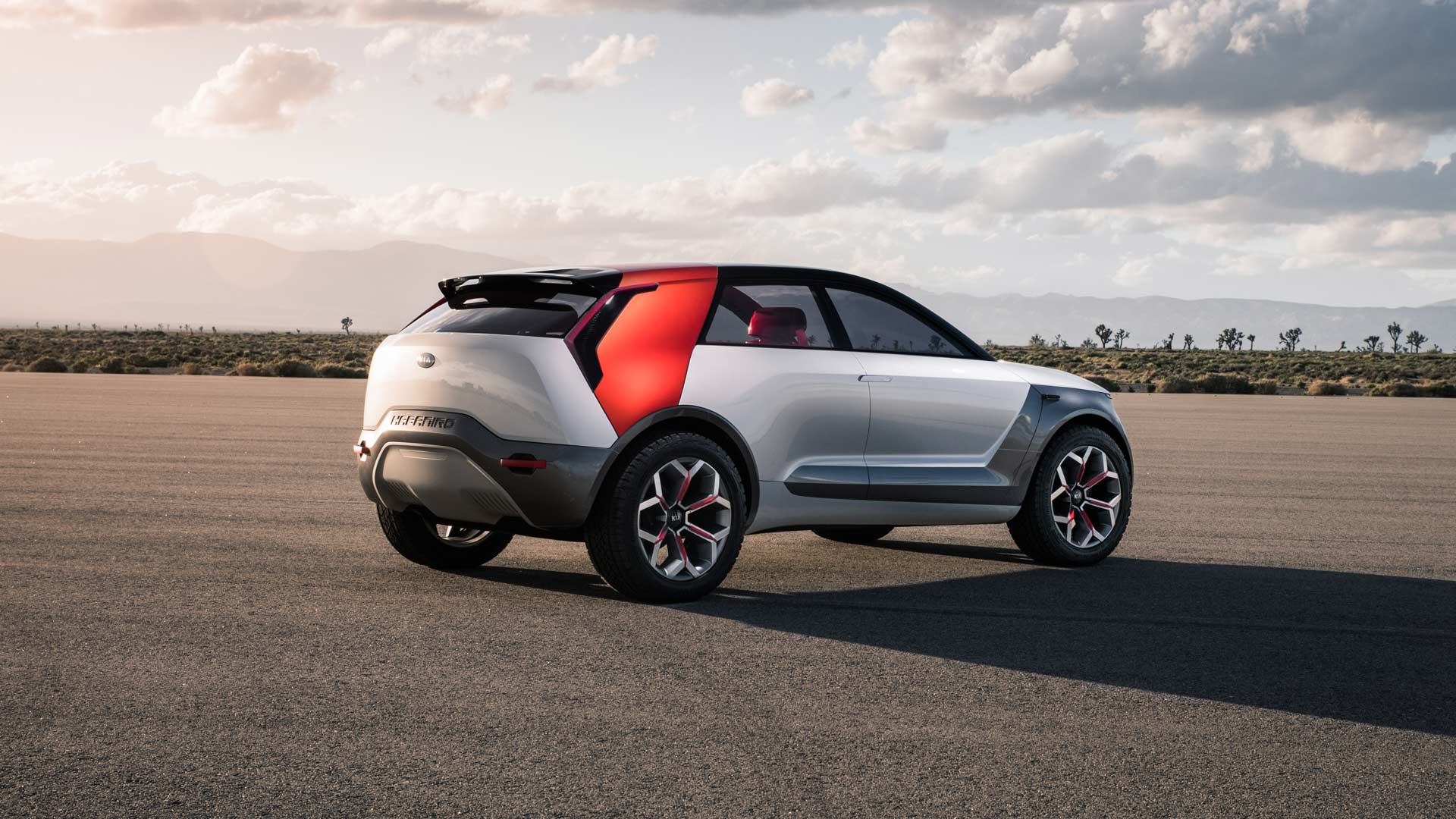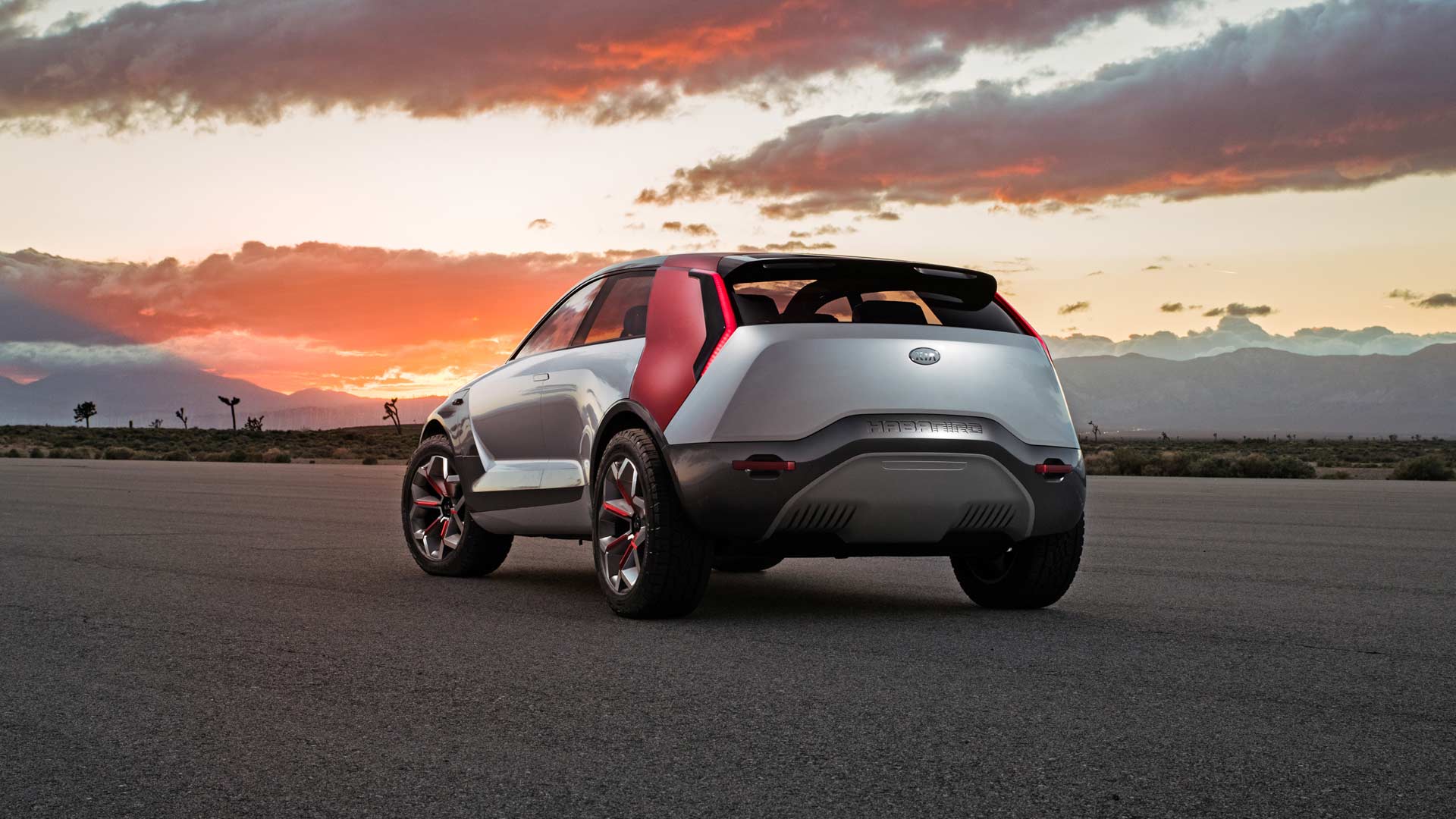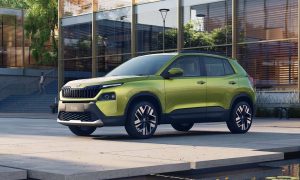Most of us tend to take such concepts with a grain of salt and forget it in a few minutes, but Kia wants you to take the HabaNiro as more than just a concept. “Some will assume the HabaNiro concept will never be built, but we don’t advise betting the farm on it,” said Kia in its official press release.
What we can assume with that statement, however, is that as with most concepts, the HabaNiro might not evolve into a production version as is, but some of its design elements and the technology it packs inside will make it into a future production vehicle. The compact electric crossover has some interesting design touches that include a metallic grey cladding that extends from the front of the vehicle onto the body sides; anodized Lava Red aero panel that defines the C-pillar and extends up and over the roof.
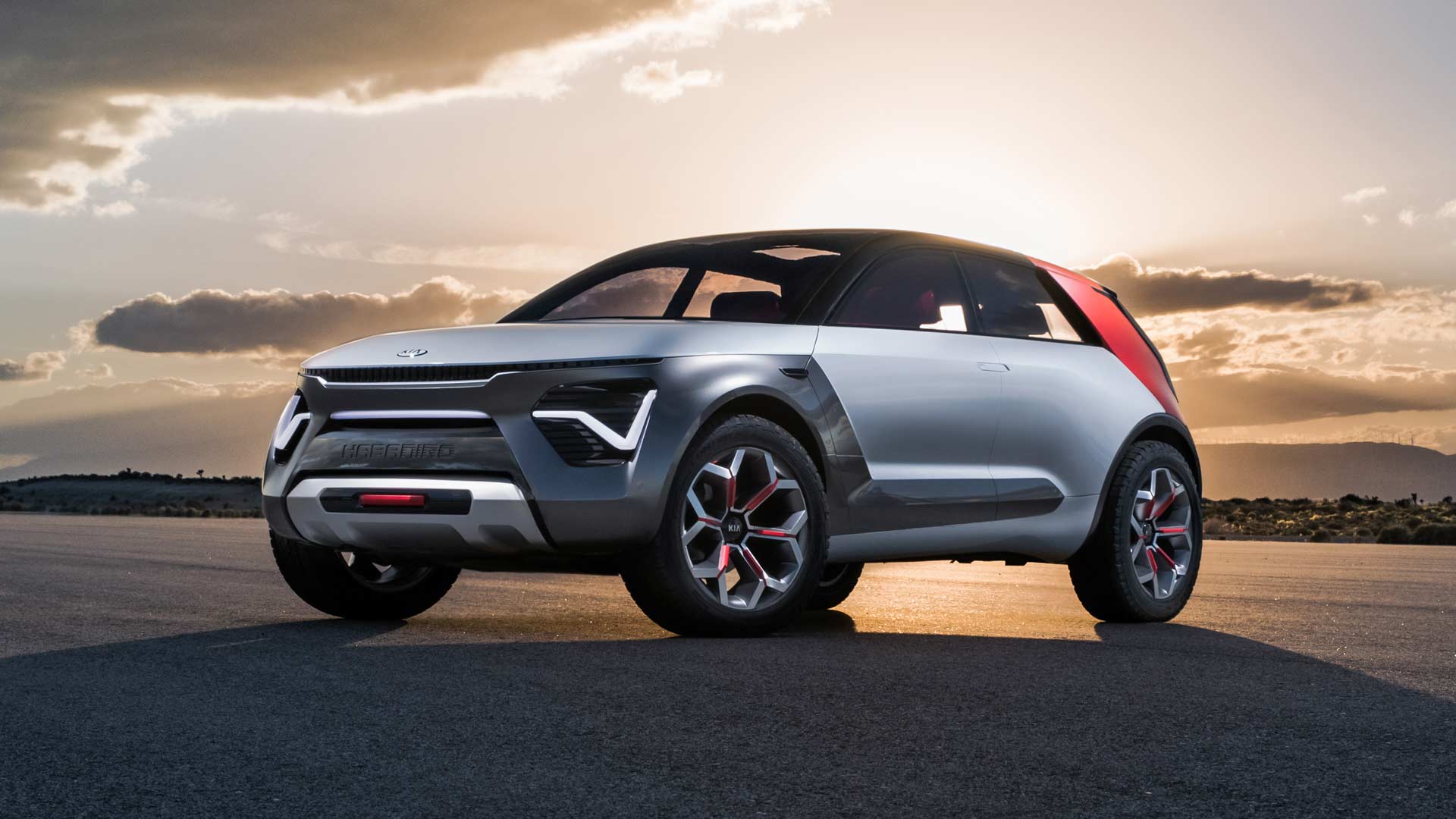
The HabaNiro’s grille was apparently inspired by the shark’s snout, complete with a slit-like gap full of gloss black aluminum “teeth” similar to the cooling blades found on electronic equipment. The EV chassis architecture allowed the wheels to be pushed to the corners, giving the HabaNiro a wide stance.
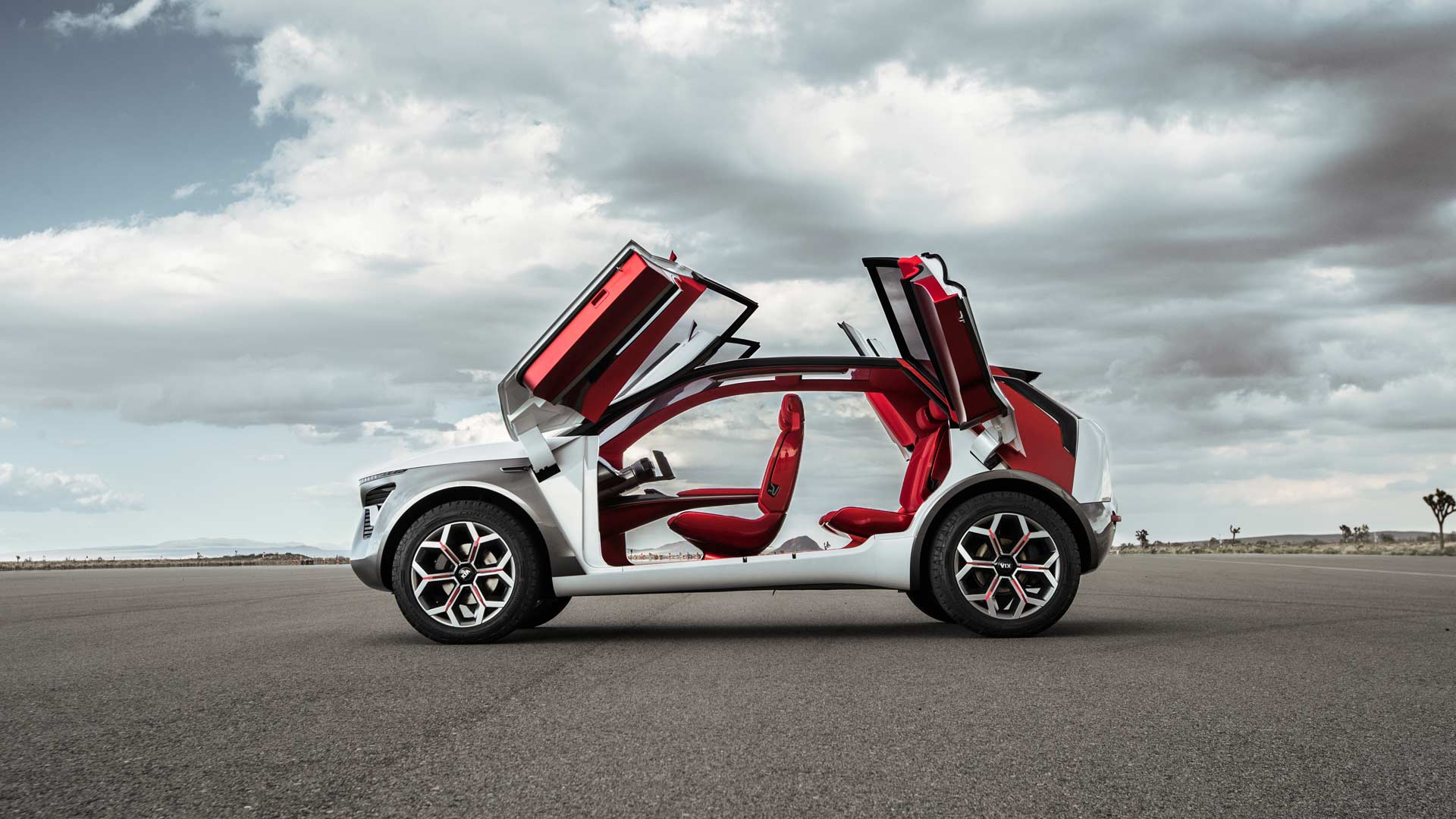 The HabaNiro’s butterfly doors? “Maybe not today,” says Kia
The HabaNiro’s butterfly doors? “Maybe not today,” says Kia
Satin aluminum skid plates, milled billet aluminum tow hooks, anodized Lava Red aluminum accents, and 20-inch wheels shod with 265/50 tyres round off the exterior looks. The DRLs perform a heartbeat pulse animation.
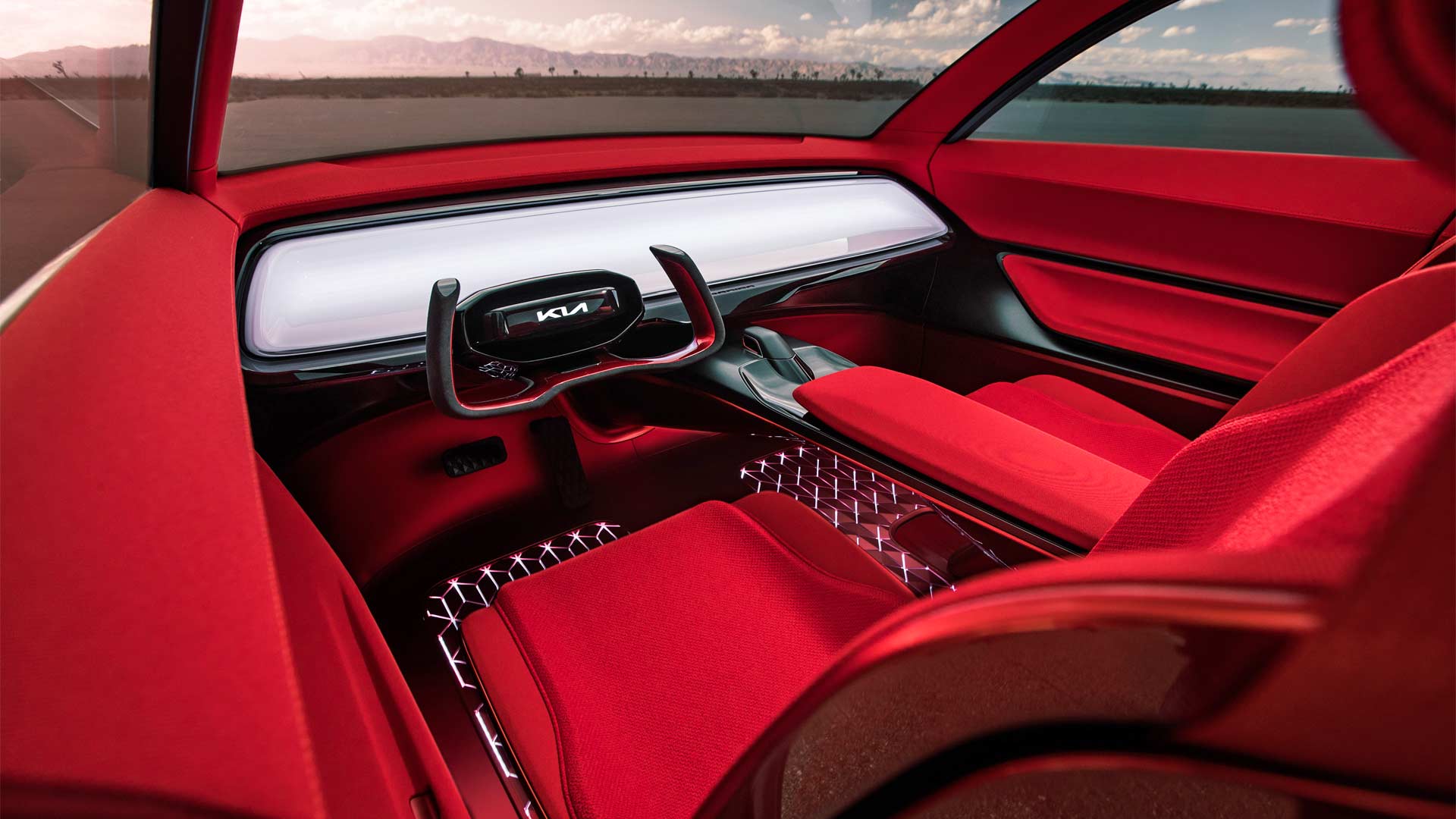
The butterfly-wing doors let you access into the Lava Red interiors, where you’ll find bouclé fabric-trimmed front seats that appear to float within the cabin. As you can see, there are no traditional rectangular screens, control knobs and buttons. Instead, the HabaNiro features a full-width windshield Heads-Up Display (HUD) system controlled by a concave acrylic panel, which is a large interactive touchpad display with Sensory Light Feedback (SLF).
Technical Option Sharing System (TOSS) lets the users swipe and move vehicle options across the HUD screen. HabaNiro’s occupants are kept comfortable by a slim Perimeter Ventilation System (PVS) that quietly and evenly blows a curtain of air throughout the cabin, Kia said. A soft ambient glow shines through the geometrically-patterned floor, creating movements that reflect onto surfaces within the cabin. The Lighting Color Effect (LCE) can be dimmed or brightened, and the hue can be modified to impact the mood of the interior environment.
The crossover features a Level 5 autonomous system that enables the steering wheel and instrument panel to retract and provide more room for the front occupants. Media and other entertainment, such as a movie for a long highway haul, can be displayed on the full-width HUD system.
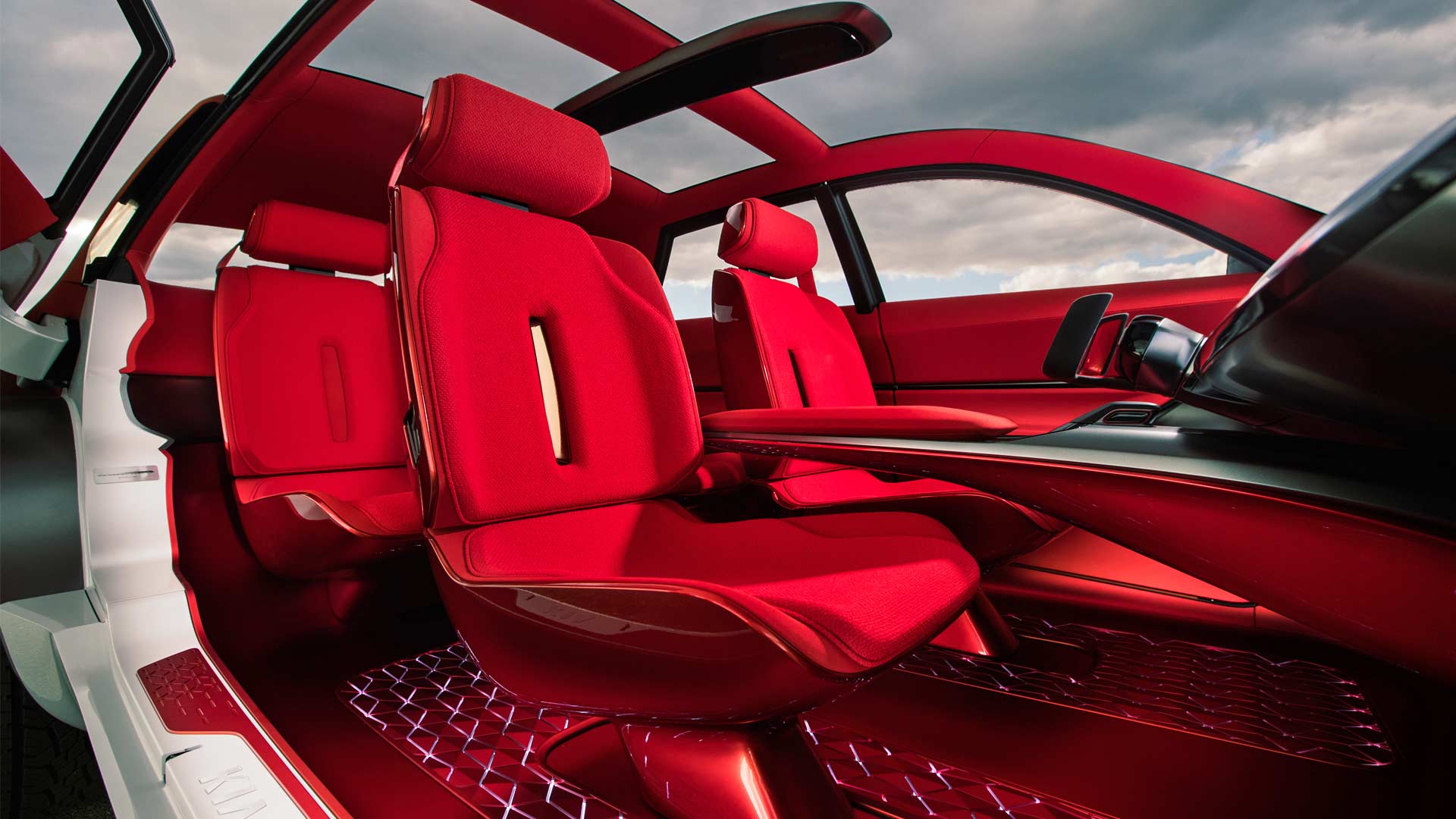 LWH – 4430mm X 1955mm X 1600mm. Wheelbase – 2830mm.
LWH – 4430mm X 1955mm X 1600mm. Wheelbase – 2830mm.
The HabaNiro also features something called Real-time Emotion Adaptive Driving (R.E.A.D.) System that monitors driver’s emotional state with the help of Artificial Intelligence-based bio-signal recognition technology, and tailors the interior environment accordingly. R.E.A.D. uses the vehicle’s Eye Tracking System (ETS) with a 180° rearview video display that replaces the traditional mirror.
As for the powertrain, the HabaNiro gets two electric motors, front and rear. Kia is targeting a 300+ mile (480+ km) range.

Leave a Reply
Note: Comments that are unrelated to the post above get automatically filtered into the trash bin.
